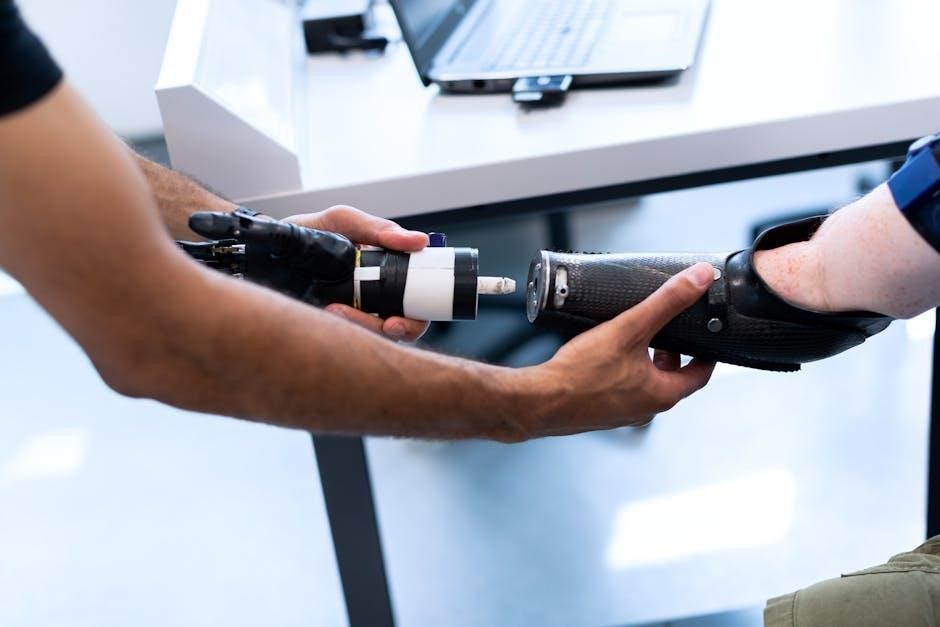Understanding the Gottman Method: Atone, Attune, Attach
The Gottman Method’s Atone, Attune, Attach approach offers a structured path to healing after infidelity, emphasizing transparency, emotional reconnection, and rebuilding trust․ Developed by Drs․ John and Julie Gottman, it guides couples through three phases to restore intimacy and strengthen their relationship foundation․
The Gottman Method’s Atone, Attune, Attach approach is a structured, evidence-based framework designed to help couples recover from infidelity․ This three-phase process emphasizes transparency, emotional reconnection, and rebuilding trust․ Developed by Drs․ John and Julie Gottman, it provides a clear pathway for healing and restoring intimacy․ The method begins with Atonement, where accountability and remorse are addressed, followed by Attunement, which focuses on emotional understanding and reconnection․ Finally, Attachment rebuilds intimacy and strengthens the bond․ Each phase is tailored to address specific emotional and relational challenges, offering couples a comprehensive approach to healing and renewal․

Phase 1: Atonement
Phase 1 focuses on accountability and remorse․ The betrayer must accept responsibility for their actions, express genuine regret, and demonstrate behavioral changes to begin rebuilding trust․
The Role of Remorse and Accountability
Remorse and accountability are foundational in the atonement phase․ The betrayer must express genuine regret for their actions, taking full responsibility without justification․ This involves acknowledging the pain caused and demonstrating commitment to change․ Accountability requires transparency and honesty, ensuring the betrayed partner feels heard and validated․ Verbal apologies alone are insufficient; consistent behavioral changes are essential to rebuild trust․ The process involves open dialogue, where both partners confront the betrayal’s impact, fostering a environment for healing․ This phase is critical for creating a foundation of accountability, allowing the relationship to move toward repair and renewal․ It is a challenging but necessary step for recovery․
Verbal Apologies and Behavioral Change
Verbal apologies are crucial in the atonement phase, but they must be accompanied by consistent behavioral change to demonstrate sincerity․ The betrayer must articulate remorse clearly and take responsibility for their actions, ensuring the betrayed partner feels acknowledged․ However, words alone are insufficient; tangible actions are required to rebuild trust․ This includes transparency, follow-through on commitments, and visible efforts to prevent future harm․ Behavioral change validates the apology and signals a genuine commitment to healing․ Without aligning words with actions, the process of atonement remains incomplete, hindering the couple’s ability to move forward․ This phase emphasizes the importance of accountability and follow-through․
Processing Emotions for Both Partners
Processing emotions for both partners is vital during atonement, allowing each to express their feelings and work toward understanding․ The betrayed partner often experiences anger, sadness, and mistrust, while the betrayer may feel guilt or defensiveness․ Open dialogue, facilitated by empathy and active listening, helps both partners confront their emotions and create a safe space for healing․ This phase requires patience and vulnerability, as unresolved emotions can block progress․ By addressing these feelings, the couple can begin to rebuild their emotional connection and lay the groundwork for the attunement phase․ Emotional processing is a shared journey, fostering mutual understanding and compassion․
Phase 2: Attunement
Attunement focuses on creating a narrative of the affair, understanding its underlying reasons, and fostering emotional reconnection through empathy and positive communication․
Creating a Narrative of the Affair
Creating a narrative of the affair involves both partners openly discussing the circumstances and emotions leading to the infidelity․ This phase fosters empathy and understanding, helping couples shift from blame to insight․ By sharing their perspectives, they uncover underlying issues and unmet needs that contributed to the betrayal․ This process encourages emotional expression and acknowledgment of pain, creating a foundation for healing․ The narrative becomes a tool for reconnection, allowing the couple to move beyond the affair and work toward rebuilding their relationship with renewed transparency and mutual understanding․
Recognizing and Responding to Emotional Cues
Recognizing and responding to emotional cues is a critical step in the Attunement phase․ Partners learn to acknowledge and interpret non-verbal signals, such as body language and tone of voice, to better understand each other’s feelings․ This skill helps couples move beyond defensiveness and fosters empathy․ For example, if one partner seems distant, the other can gently inquire, “I notice you seem quiet; is everything okay?” This practice strengthens emotional connection and creates a safe space for open communication, which is essential for healing and rebuilding trust in the relationship․ Regular attentiveness to these cues promotes deeper intimacy and understanding․
Replacing Contempt with Appreciation
Replacing contempt with appreciation is a vital aspect of the Attunement phase, focusing on shifting from negative to positive interactions․ Couples learn to express gratitude and acknowledge each other’s efforts, rather than focusing on flaws․ This practice helps eliminate hurtful communication patterns and fosters a supportive environment․ By actively recognizing and appreciating positive behaviors, partners rebuild emotional safety and connection․ For instance, expressing thanks for a thoughtful gesture can strengthen trust and intimacy․ This shift from contempt to appreciation is key to healing and creating a foundation for a healthier, more loving relationship․ Regular practice of gratitude helps maintain emotional balance and mutual respect․

Phase 3: Attachment
Attachment focuses on rebuilding emotional closeness and trust, with sexual intimacy playing a key role in reigniting the relationship and fostering deeper connection and commitment․
Rebuilding Intimacy and Trust
Rebuilding intimacy and trust involves creating a safe emotional environment where both partners feel secure and valued․ This phase emphasizes open communication, vulnerability, and mutual understanding․ Couples learn to express their needs and desires, fostering a deeper emotional connection․ Sexual intimacy is a crucial aspect, as it helps reignite physical and emotional closeness․ Trust is gradually restored through consistent, transparent actions and a commitment to honesty․ The goal is to create a resilient bond, allowing the relationship to flourish beyond the betrayal․ This process requires patience, empathy, and a shared dedication to rebuilding the foundation of trust and intimacy․
The Importance of Sexual Intimacy

Sexual intimacy plays a vital role in reigniting physical and emotional connection, essential for healing after betrayal․ It fosters vulnerability, mutual respect, and trust, helping partners reconnect on a deeper level․ Without sexual intimacy, the relationship struggles to rebuild, as it is a cornerstone of emotional and physical closeness․ This phase encourages open dialogue about desires and boundaries, ensuring both partners feel safe and valued․ By prioritizing intimacy, couples can strengthen their bond and create a resilient, fulfilling relationship․ The Gottman Method emphasizes the necessity of sexual intimacy in the attachment phase to restore connection and deepen emotional trust․
Maintaining Emotional Connection
Maintaining emotional connection is crucial for lasting relationship repair․ It involves fostering open communication, empathy, and mutual understanding․ Couples must prioritize shared activities that promote bonding and create opportunities for meaningful interactions․ Active listening and expressing emotions without judgment are key to deepening trust and intimacy․ This phase encourages partners to remain attuned to each other’s needs, ensuring emotional availability and responsiveness․ By nurturing emotional connection, couples can build resilience against future challenges and cultivate a stronger, more fulfilling partnership․ Regular check-ins and expressions of appreciation also help sustain emotional closeness, reinforcing the foundation of trust and connection rebuilt during the Atone, Attune, Attach process․
Psychological Benefits of the Atone, Attune, Attach Method
The method reduces emotional pain, fosters trust, and enhances intimacy․ It promotes accountability, empathy, and understanding, helping couples heal from betrayal and rebuild a secure relationship foundation․
Healing from Betrayal and Rebuilding Trust
The Gottman Method’s Atone, Attune, Attach approach provides a pathway for couples to heal from infidelity․ Atonement involves the betrayer taking responsibility, expressing remorse, and making amends, which helps the betrayed partner begin to process their pain․ Attunement fosters emotional reconnection by creating a narrative of the affair and addressing underlying issues, allowing both partners to understand each other’s perspectives․ Finally, Attachment rebuilds intimacy and trust through empathy, vulnerability, and renewed commitment․ This structured method helps couples move beyond betrayal, fostering a deeper understanding and strengthening their relationship’s foundation․ It emphasizes accountability, emotional healing, and the importance of mutual effort in rebuilding trust․

Real-Life Applications and Case Studies
Couples have successfully applied the Gottman Trust Revival Method to rebuild relationships post-infidelity․ One case highlights how atonement, attunement, and attachment phases fostered healing, restoring trust and intimacy through structured emotional and behavioral changes․

Success Stories of Couples Using the Method

Many couples have found renewed hope through the Gottman Trust Revival Method․ One notable case involved a couple rebuilding their relationship after infidelity․ By navigating the atonement, attunement, and attachment phases, they transformed skepticism into trust․ The betrayer’s consistent remorse and behavioral changes laid the groundwork for healing․ Through creating a narrative of the affair and replacing contempt with appreciation, they reconnected emotionally․ Rebuilding intimacy and sexual connection strengthened their bond․ This journey highlights how the method’s structured approach fosters resilience and fulfillment, proving that relationships can thrive after betrayal with commitment and effort․
The Gottman Atone, Attune, Attach method offers a proven, structured approach to healing after betrayal, fostering trust, intimacy, and emotional connection through its three transformative phases․
Final Thoughts on the Gottman Trust Revival Method
The Gottman Atone, Attune, Attach method provides a compassionate and evidence-based approach to healing relationships after infidelity․ By focusing on accountability, emotional connection, and rebuilding intimacy, couples can navigate the complex process of recovery․ The method emphasizes transparency, empathy, and mutual understanding, offering a structured path to reconciliation․ While the journey is challenging, the Gottman approach ensures that both partners feel heard and valued․ Its phased strategy not only addresses immediate wounds but also fosters resilience for future challenges․ Ultimately, the Gottman Trust Revival Method reaffirms the possibility of restoring trust and creating a stronger, more fulfilling relationship․
